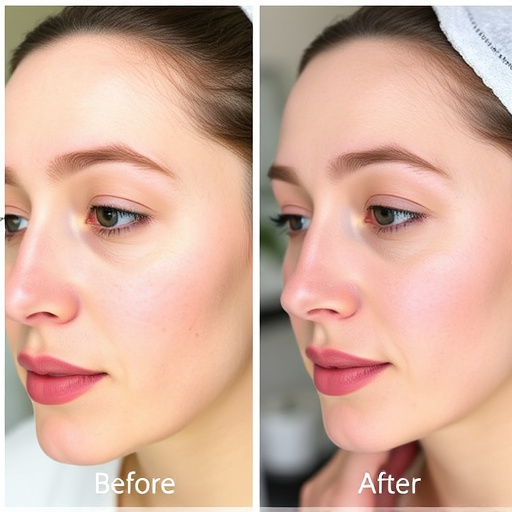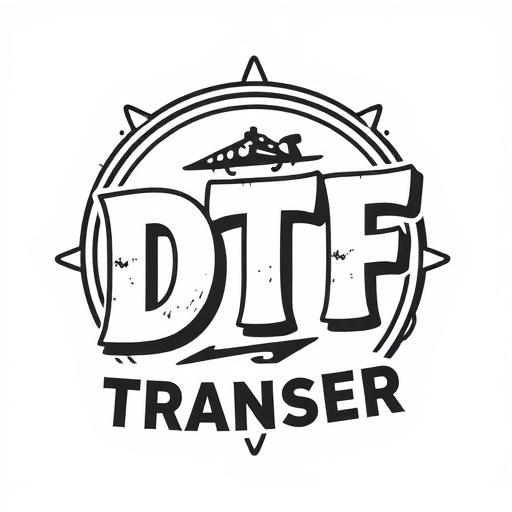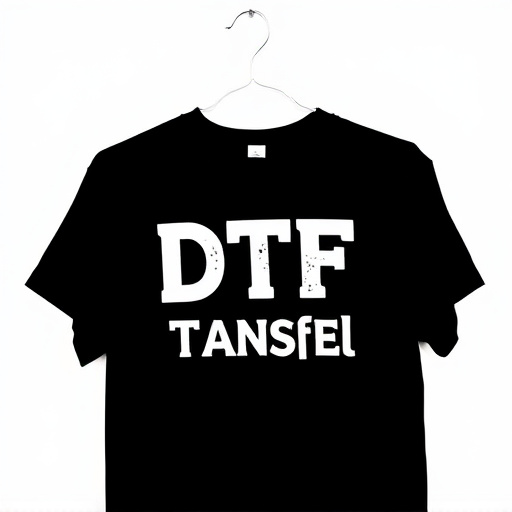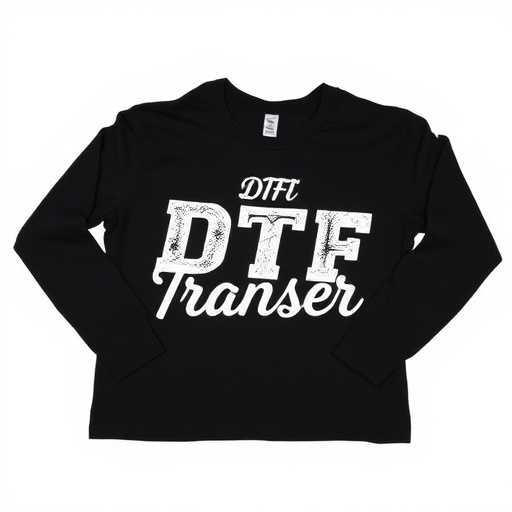Direct-To-Fabric (DTF) transfers empower creators to print intricate, vibrant designs directly onto various fabrics for custom apparel. This modern method streamlines production compared to traditional techniques, reducing costs and setup times. Designers conceptualize patterns using software, print them onto DTF sheets, then apply them to garments with heat, resulting in durable, aesthetically pleasing prints. Choosing the right transfer type, fabric treatment, printing settings, and post-print care ensures high-quality DTF results. This technology has revolutionized fashion by enabling complex designs on diverse fabrics, fostering experimental expressions.
“Discover the world of DTF (Direct to Fabric) transfers and their revolutionary impact on specialty clothing. This cutting-edge printing method offers a myriad of advantages, from vibrant colors to endless design possibilities. Learn how DTF technology transforms garments into wearable art, allowing for unique customization. From understanding the basics to exploring popular trends, this guide covers everything you need to know about DTF transfers, ensuring high-quality prints and stylish results.”
- Understanding DTF Transfers: A Brief Overview
- Advantages of DTF Printing for Specialty Clothing
- The Process: From Design to Application
- Choosing the Right DTF Transfer for Your Garment
- Best Practices for Achieving High-Quality DTF Prints
- Popular Use Cases and Trends in DTF Transfer Printing
Understanding DTF Transfers: A Brief Overview

Understanding DTF Transfers is key to unlocking a world of creative possibilities in specialty clothing customization. A DTF (Direct-To-Fabric) Transfer is a modern printing method that allows for high-quality, detailed designs to be applied directly onto various fabric surfaces. Unlike traditional printing techniques that often require multiple layers and complex setups, DTF Transfers offer a streamlined process with remarkable results.
DTF Printing leverages specialized inks that are precisely transferred from a print head onto the desired fabric, creating crisp, vibrant DTF prints. This method is particularly well-suited for specialty clothing because it can accommodate a wide range of fabrics, textures, and even curved surfaces. From custom t-shirts to unique accessories, DTF Transfers offer endless opportunities for designers, artists, and businesses to bring their visions to life on wearable art pieces.
Advantages of DTF Printing for Specialty Clothing
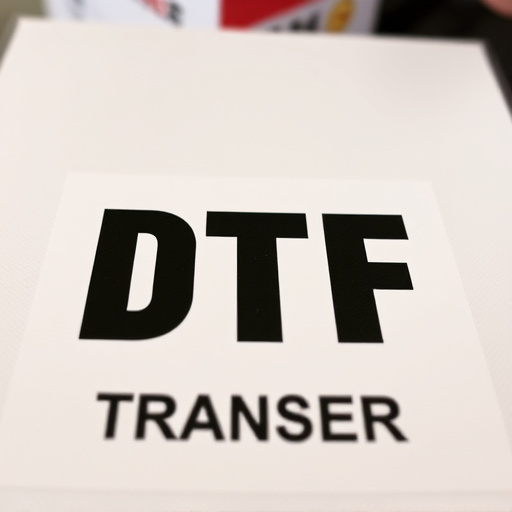
Direct to fabric (DTF) printing offers a myriad of advantages for specialty clothing items. One of its key benefits is the ability to produce high-quality, vibrant prints on a wide range of fabrics, from cotton and polyester to nylon and spandex. This versatility makes DTF ideal for custom apparel, allowing designers and manufacturers to create unique, eye-catching pieces that cater to diverse consumer preferences.
Furthermore, DTF Printing is a cost-effective method compared to traditional printing techniques. It streamlines the production process by eliminating the need for separate plates or screens, reducing setup times and labor costs. This efficiency, coupled with the ability to print on demand, enables businesses to offer personalized clothing options without incurring substantial overhead. As such, DTF Transfer has become a preferred choice for specialty clothing, empowering creators to bring their artistic visions to life in a timely and economical manner.
The Process: From Design to Application
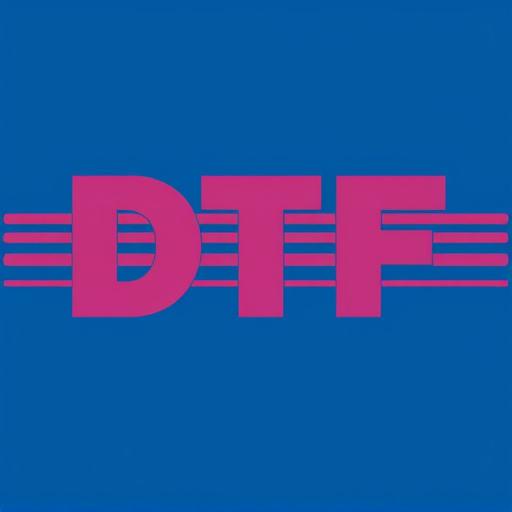
The process of creating and applying DTF Transfers to specialty clothing items is a meticulous art. It begins with designers conceptualizing unique patterns and graphics using specialized software. These designs are then digitally printed onto a thin, flexible material known as a DTF (Direct-to-Fabric) transfer sheet. The DTF transfer sheets come in various colors and materials, allowing for customization to suit different fabric types and desired aesthetics.
Once the design is finalized on the transfer sheet, it’s carefully aligned with the clothing item, typically a t-shirt or hoodie. Heat is then applied using a press or iron, melting the transfer’s adhesive backing and fusing the design onto the garment. This process, known as DTF printing, ensures crisp, vibrant prints that become an integral part of the fabric, offering both durability and a visually appealing finish.
Choosing the Right DTF Transfer for Your Garment

When selecting a DTF (Direct to Fabric) transfer for specialty clothing items, understanding your garment’s requirements is paramount. Different fabrics have distinct properties, such as absorbency and texture, which influence the quality of DTF prints. For instance, cotton offers excellent ink adhesion due to its smooth surface and high absorbency, while synthetic blends may demand specialized DTF inks or pre-treatments for optimal results. Choosing the right transfer type ensures a crisp, long-lasting print that complements your fabric’s unique characteristics.
Additionally, consider the design complexity and color palette of your garment. Simple, solid-color designs lend themselves well to standard DTF transfers, while intricate patterns or multi-colored artworks may require advanced printing techniques like multilayer or gradient DTF processes. Matching the transfer method with your creative vision guarantees a final product that meets both aesthetic and durability standards.
Best Practices for Achieving High-Quality DTF Prints
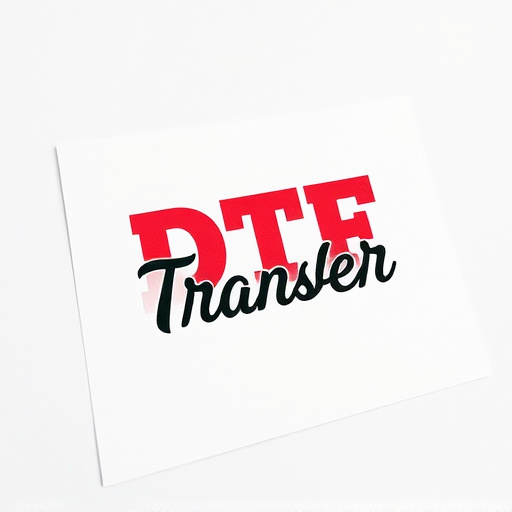
Achieving high-quality DTF (Direct to Fabric) prints on specialty clothing items requires a meticulous approach. The best practices begin with selecting premium DTF transfers designed for the specific fabric type, ensuring optimal adhesion and color vibrancy. High-resolution design files are crucial; intricate details should be crisp and precise to maintain the print’s aesthetic appeal. Pre-treating fabrics with appropriate primers or coatings enhances ink adherence, resulting in more durable prints that withstand washing and wear.
During the printing process, maintaining consistent temperature and pressure settings is essential for consistent results. Modern DTF printers offer precise control over these variables, allowing for fine-tuning to suit different fabric materials. Post-print treatments such as heat pressing or air drying reinforce the ink bond, ensuring the prints remain vibrant and long-lasting. Regularly cleaning and maintaining your printing equipment also plays a vital role in delivering consistent, high-quality DTF prints.
Popular Use Cases and Trends in DTF Transfer Printing
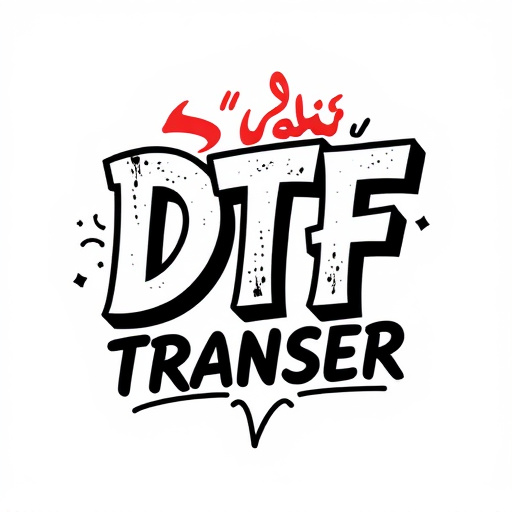
The Direct to Fabric (DTF) transfer printing technology has gained immense popularity for its versatility and ability to enhance specialty clothing items. Its use cases span across various sectors, including fashion, sportswear, and promotional merchandise. One of the primary trends is the integration of DTF with innovative design tools, allowing for complex and intricate patterns that were once challenging to achieve with traditional printing methods. This has led to an increase in custom, personalized, and unique clothing pieces catering to individual styles and preferences.
Additionally, DTF Printing offers a wide range of applications such as printing on diverse fabric types, from cotton t-shirts to synthetic performance fabrics. The technology’s ability to produce high-quality, vibrant DTF prints has made it a preferred choice for creating eye-catching designs that withstand multiple washes and maintain their richness in color and detail. This versatility has driven the trend towards more experimental and artistic clothing expressions, pushing the boundaries of conventional fashion and design.





